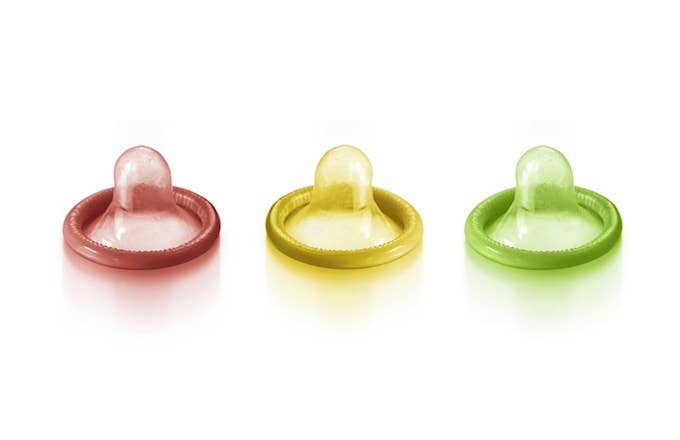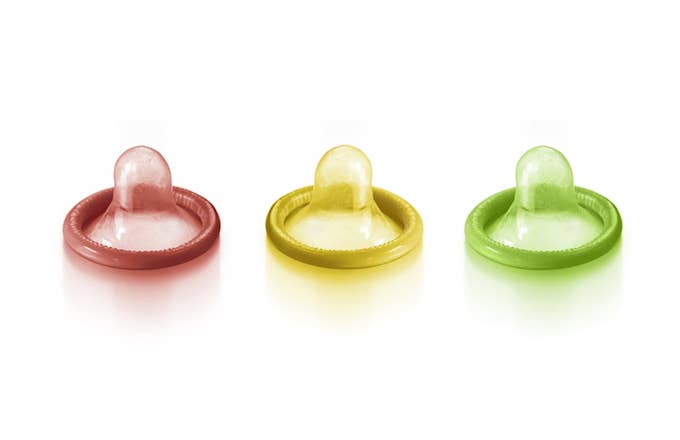
For the third consecutive year, the CDC reported that sexually transmitted diseases reached an all-time high in the United States in 2016. They offer abstinence as the number one way to combat and prevent STDs, and while that’s technically true, the advice isn’t realistically deterring people from sex—with or without protection. Two million new cases of STDs were discovered in 2016. That’s nearly 5,480 new cases a day. And with the continual cutting of sexual education programs across the country, the gross allocation of funds to abstinence-only education, and the attack on healthcare from our current administration, one can comfortably assume that 2017 is probably going to set a new STD mark by the end of the year.
While the lack of education about the actual diseases themselves is unfortunate, the reality is we’re taught even less about how to discuss STDs with current, former, and future partners. If many parents bypass the sex talk, barely any broker the STD chat. Still, the CDC continues to offer abstinence as the only way to 100 percent prevent STDs, ignoring the troubling data that shows that 15 to 24-year-olds are the group most affected by STDs in this country.
Should you find yourself even a little bit concerned about potentially contracting a sexually transmitted disease, it’s best to play it safer than you did in the bedroom and get tested ASAP. Since symptoms frequently don’t appear for a period of time, you’ll definitely want to make a habit out of getting tested once a year. Don’t let fear keep you from getting to the doctor—many of these diseases can be cured with antibiotics.
Once tested, if you find out you do have something, no matter how awkward it seems, you need to contact the people you’ve had sex with, protected or unprotected, and let them know what you have and how you are handling it. If you are comfortable enough putting your mouth on someone’s penis or vagina, you shouldn’t be too shook to discuss sex with them, be it for safety or pleasure.
If a partner of yours contacts you to say they’ve contracted an STD, it’s best to act like an adult, recognize that you both participated in unsafe sex with each other and reasonably decide how you should take action.
With all of this in mind, here’s what you need to know about each major STD if you ever plan to have sex again.
Causes: It’s a bacterial infection.
How you get it: As the bacteria is carried in semen, pre-cum, and vaginal fluids, it’s most commonly contracted by unprotected vaginal, oral, or anal sex, but in rare instances, it can also affect the eyes should infected fluids get in them.
Symptoms: A notifiable disease is a disease that is required to be reported to the government, and chlamydia is the most common notifiable disease in the U.S. largely due to it being nearly symptomless and because symptoms you may have can easily be mistaken for something else or seem too minor to be chlamydia.
Symptoms can include something as simple as lower belly pain all the way up to abnormal discharge from the penis or vagina, pain or burning when peeing, pain while having sex, and/or swollen testicles.
Most affected group: Young women ages 19 and 20 averaged 4,718.6 cases per 100,000 tested. Nearly 3 million people total get it in the U.S. every year, and for all sexes, it’s most common for 14 to 24-year-olds.
Cure: Chlamydia can be cured with antibiotics offered in either one dose or pills that you take daily for a week. Two options typically prescribed are azithromycin and doxycycline.
If left untreated: Chlamydia can spread to the uterus and fallopian tubes in women and cause pelvic inflammatory disorder. It can also result in infertility in some women. Men don’t usually have to deal with the same infertility issues as women do, but chlamydia can result in extreme pain in the testicles.
Causes: Also known as "the clap," gonorrhea is a bacterial infection.
How you get it: Similar to chlamydia, the bacteria is carried in semen, pre-cum, and vaginal fluids, so it’s most commonly contracted by unprotected vaginal, oral, or anal sex.
Symptoms: Although frequently misinterpreted or even symptomless, pain or burning when peeing is possible. Both those with penises and vaginas can experience abnormal discharge, and those who menstruate can experience bleeding between their periods.
Gonorrhea can be found in the anus, too, and similarly, while there may not be any symptoms, it may be itchy in or around the anus or cause pain when going to the bathroom.
Rare cases have been found in the throat but only appear as a sore throat if there are any symptoms at all, which is scary, so if you do test positive for gonorrhea and have been having unprotected oral sex, you’ll want to consider getting your throat tested, too.
Most affected group: Men and women ages 20 to 24 are the most affected by gonorrhea, but cases in men have increased the greatest amount from 2009 (when it was at a record low) to now.
Cure: Once believed to be very easy to treat, new strains that are resistant to antibiotics are on the rise. Doctors may prescribe one or two different medications for the infected. Antibiotics ceftriaxone or cefixime can be administered as a shot or azithromycin in a one-day dose or pills for seven days. They are often prescribed together.
If left untreated: Gonorrhea can have the same side effects as chlamydia.
Causes: Herpes is actually caused by two herpes simplex viruses known as HSV-1 and HSV-2. Although HSV-1 is known to cause oral herpes and HSV-2 is known as genital herpes, both viruses can cause herpes on or around genitals (including the anus or even inner thighs) and on the lips and inside the mouth.
How you get it: Herpes can be spread through skin to skin contact. You don’t even have to have sex or cum to contract either virus. It can be spread by as little as kissing if the infected person has oral herpes.
Symptoms: Itchy and painful blisters that eventually turn to open sores are the most obvious symptoms, however, herpes can be dormant inside the body for years making it difficult to figure out how or when it was contracted. Additionally, with HSV-2, you may have cold or flu-like symptoms like body aches, fever, chills, and swollen glands in your throat, armpits, and pelvic area.
Most affected group: Herpes is not required to be reported to the government, so the most recent data the CDC offers is from 2010. At that time, 20.9 percent of women ages 14 to 49 had HS-2, while about 11.5 percent of men were diagnosed with it. It is extremely common.
Cure: There is no cure for herpes, but it can be treated to lessen or prevent future outbreaks with prescribed pills like acyclovir, famciclovir, and valacyclovir.
If left untreated: Herpes isn’t deadly and it doesn’t cause the devastating side effects other STDs can cause.Typically, the first outbreak is the worst. While the viruses will live in the body forever, it doesn’t necessarily mean future breakouts will occur.
Causes: With over 100 different strands of the virus, 40 of which can affect the genitals, anus, mouth or throat, HPV is the most common STD. Two types of HPV can cause genital warts and nearly a dozen other strands can result in cancer. Cervical cancer is the most common, but these types have caused cancer in the throat, vagina, vulva, penis, and anus.
How you get it: Similar to herpes, HPV only requires skin-to-skin contact to be contracted.
Symptoms: With lower risk, non-cancer-causing HPV types, genital warts will appear. They look similar to those warts people get on their hands or feet.
Cancer-causing HPV is symptomless unless it’s developed into the pre-cancerous cells or cancer. Regular check-ups are extremely important to making sure you don’t develop problems from symptomless high-risk HPV.
Most affected group: This varies a lot as it is extremely common. According to the CDC, in 2013–2014, "any genital HPV prevalence among adults ages 18 to 59, was 42.5 percent in the total population, 45.2 percent among men, and 39.9 percent among women; high-risk genital HPV prevalence was 22.7 percent in the total population, 25.1 percent among men, and 20.4 percent among women."
Cure: While there is no cure for HPV, there are multiple procedures to remove pre-cancerous cells from the cervix for women. There are also vaccines available to prevent both cancer-causing and genital wart-causing types of HPV.
If left untreated: As stated above, if left untreated, high-risk HPV can turn cancerous.
Causes: HIV, or human immunodeficiency virus, attacks your immune system, weakens it, and causes AIDS.
How you get it: In addition to unprotected vaginal or anal sex, HIV is passed through sharing needles for drugs, piercings, or tattoos, and through infected blood, semen, or vaginal fluids getting into open wounds.
Symptoms: It can take up to 10 years for HIV to show symptoms and a lot of times they are mistaken for much less serious ailments like the flu. AIDS symptoms are much worse and can range from more severe flu-like symptoms to thrush, purple growths on your skin or inside your mouth, bleeding from your mouth, nose, anus, or vagina, slowing reflexes, and losing control in your extremities.
Most affected group: Gay and bisexual men are the most affected group.
Cure: There is no cure for HIV or AIDS, but there are treatments to help people lead a long, healthy life.
If left untreated: As AIDS wears down your immune system, it becomes a lot more difficult for your body to fight off any other illnesses.

